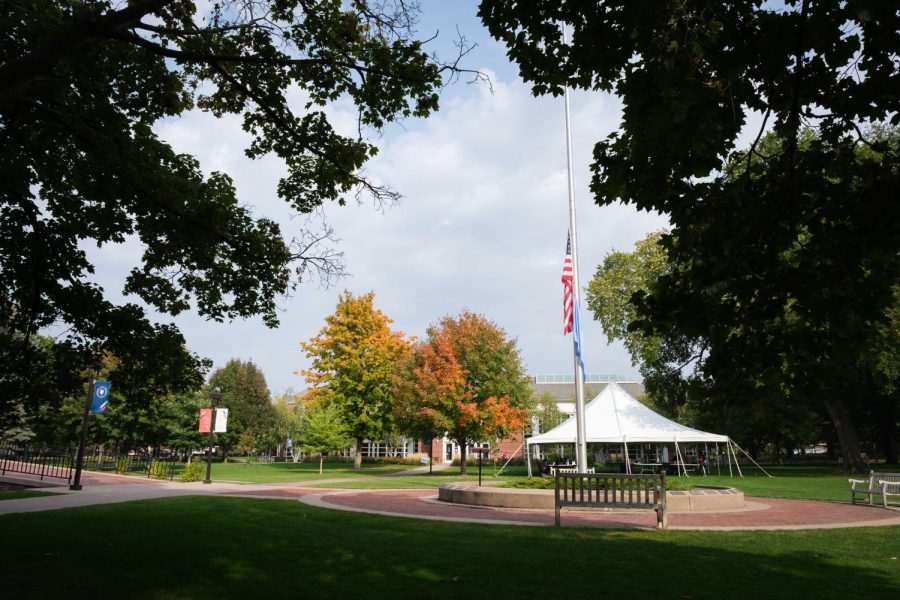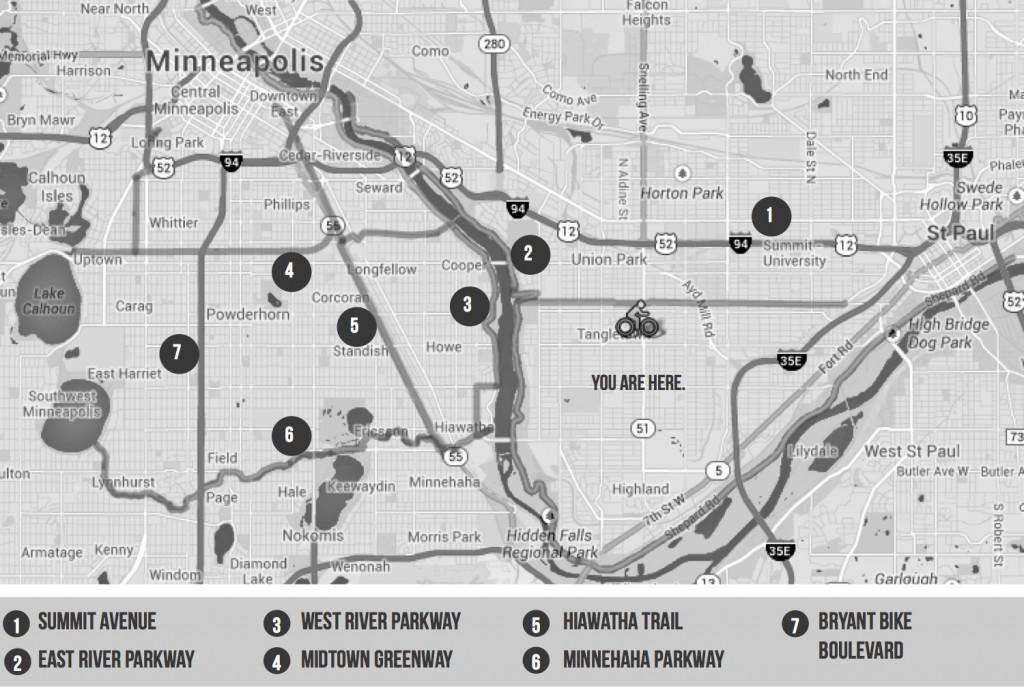One of the main reasons I (and probably you) chose Macalester was its urban location: the ability to connect with our greater surrounding community and escape from the college “bubble” make the prospects of spending four years here exciting. The possibilities for adventures in the Twin Cities in search of food, fun and work are endless, and these are among the best aspects of being at this school.
Over the past two years, I’ve been lucky enough to traverse much of the city by bicycle. To me, this is the best way to get around the Twin Cities. Both Minneapolis and Saint Paul have extensive bike infrastructure, making the region one of the most bike-friendly cities in the United States. Perhaps my favorite thing about biking is that I feel in touch with the community to a greater extent when I travel on two wheels. I am literally more down to earth and feel immersed and connected to the institutions, infrastructure and people of my city, but am still able to explore multiple neighborhoods in a short amount of time. I can stop whenever my heart desires, parking right at storefronts, pedaling to the center city parks, and can even throw my bike on the front of a Metro Transit bus if I get tired or want to do some reading on the way home.
This sense of freedom and agency is amplified by the knowledge that my mobility is essentially free—after the cost of the bike itself, I don’t have to worry about paying for insurance, parking or expensive maintenance, and the only energy I need comes in the form of a $5 falafel rather than a $50 fossil fuel fill-up. Cost is a factor that all college students can appreciate when they’re trying to get around the city. The average cyclist will likely spend a mere $60-80 on a yearly bicycle tune-up. Studies by AAA indicate a car can cost the average American $7,000-$10,000 a year to operate—dwarfing the yearly cost of a bike by orders of magnitude (not to mention the differences in up-front cost).
The money you save by biking will hopefully allow you to use more of your resources to patronize local bike shops, farmers markets, art museums, restaurants and other businesses accessible from the Twin Cities bike network. You will also help cut down on the external costs society pays for driving’s effects on public health, including accidents and air pollution from the carbon intensive form of transit.
You’ll also be caring for your own health as you bike. When I commuted to Minneapolis this summer, it saved me from having to budget extra time in my day for a workout. Time savings doesn’t stop with fewer trips to the gym—frequent bikers find that, depending on the route they take in the cities, commuting by bike can actually be faster than by car (especially when utilizing a bike freeway like the Greenway), and most local bike trips are only marginally shorter by car. The mental health component is also attractive: riding a bike is just plain fun. You never lose your sense of mobility and freedom, and even after taking a route 50 times, you can capture the nuances in your surroundings and learn to better appreciate your community.
Minneapolis and Saint Paul’s transportation system contributes to the cities’ vibrancy, excitement and accessibility, and by engaging in the bike community, you will create demand for a more progressive 21st-century infrastructure. Hopefully this guide will help launch you into years of exploration! This column is designed to be a Twin Cities biking primer—in the next few weeks, it will feature information on choosing a bike appropriate for your needs, bike safety, the Mac Bike student organization, key routes around the city, and possibilities for bike camping. So check out a free helmet from the library, put the fun between your legs and explore!







Ian Lambert • Sep 8, 2019 at 4:32 am
I like what you guys are doing. Such smart work and reporting! Carry on with the excellent works guys. I’ve incorporated you guys to my blogroll. I think it will improve the value of my site. 🙂